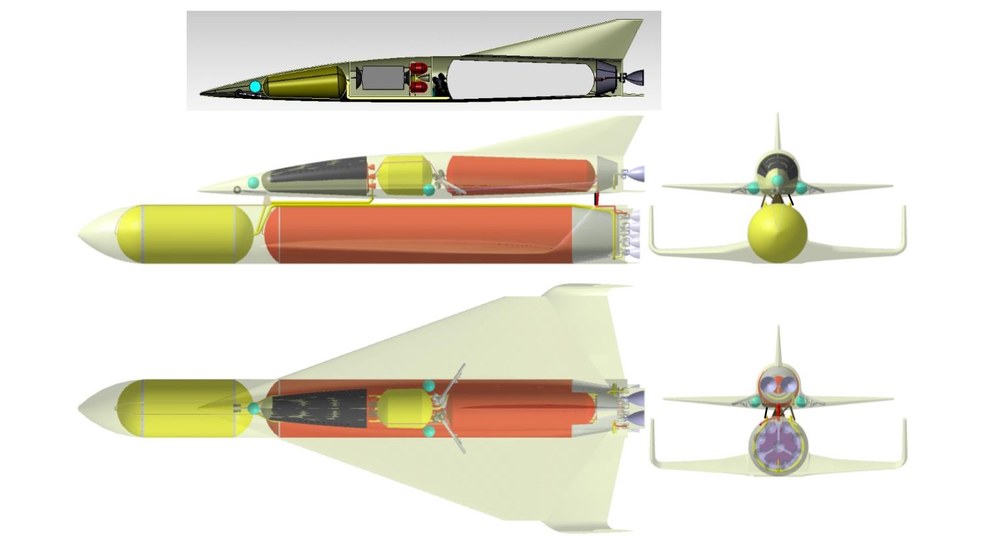Concept Description

The concept consists of a fully reusable launch vehicle with a parallel arrangement of booster and upper stage. The latter can be designed as a passenger stage or as an orbital, unmanned satellite transporter.
The two-stage vertical take-off configuration consists of a large unmanned booster and a manned stage designed for 50 passengers and 2 crew members. The fully reusable vehicle will be accelerated by a total of eleven liquid rocket engines (9 for the booster, 2 for the passenger stage), which will be powered by cryogenic liquid oxygen (LOX) and hydrogen (LH2).
The concept also envisages the passenger cabin acting as an autonomous rescue capsule that can be separated from the vehicle in an emergency, allowing passengers to return to earth safely.
Mission
Once the engines have been switched off, the orbiter stage should enter a high-speed gliding phase and be able to cover large intercontinental distances in the shortest possible time. Depending on the mission, flight altitudes of 80 kilometers and Mach numbers in excess of 20 are planned. The SpaceLiner's flight time from Australia to Europe is expected to be just 90 minutes, and no more than 60 minutes on the Europe-California route.
The acceleration loads for the passengers on these missions should remain below those of the space shuttle astronauts, with a maximum of 2.5 g occurring during the propelled part of the flight.
Technologies
Several advanced technologies are required for the realization of the SpaceLiner, which are currently being investigated at DLR and with international partners.
Here are a few examples:
The SpaceLiner 7 achieves an excellent hypersonic L/D of 3.5 to M=14 without flap deflection, assuming a fully turbulent boundary layer. Mach contours of the SpaceLiner 7-1 passenger stage at M= 10, angle of attack alfa = 6° from ESA-ESTEC Euler CFD calculation:
The main propulsion system will be rocket engines in the main power cycle with full pre-combustion, as on the SpaceX Raptor. The performance data of the engines are not overly ambitious. However, the ambitious goal of a passenger rocket is to significantly improve the reliability and reusability of the engines beyond the current state of the art.
The maximum permissible temperature of passive thermal protection on the SpaceLiner is 1850 K. The leading edge and nose areas exceed this limit and require advanced active cooling.
In areas where the heat flow and temperatures exceed the acceptable values for CMC, transpiration cooling with liquid water is a possible technical option. This innovative method was tested experimentally in the arc-heated wind tunnel at the DLR in Cologne using small samples of various porous ceramic materials.
